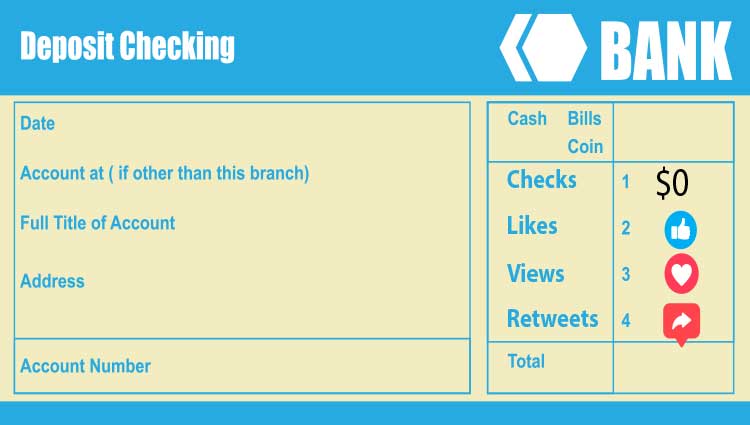You’ve seen it before: a nonprofit posts about a successful event on social media (Facebook, LinkedIn, or Twitter, or Pinterest, or…) and racks up thousands of likes and shares. The team high-fives and takes a bow and … then what happens?
Hint: You Can’t Deposit or Spend ‘Likes’
Those gleaming little thumbs-up on social media don’t pay the rent or fund your next project. You’ve got to get past the ‘like’ trap and turn social media engagement into real dollars and cents.
Today, the coinage of approval dominates our digital landscape. Thumbs-up, hearts, and retweets are the new treasure. But here’s the thing: just like fool’s gold, a lot of our digital treasure is all sheen and little substance. The nonprofit sector is no exception. It’s actually worse than the exception: some would say it’s caught in a more sinister dance of vanity masquerading as virtue.
Like any alchemists worth their salt, we take these tedious commodities and refine them into a substitute virtue: people’s ‘likes’ and ‘shares’ become the nonprofit currency of self-esteem, the mark of one’s importance. They’re still fool’s gold, though. Authentic worth can’t be tallied on a screen as ‘likes’ or any other currency; it depends on real contributions and connections. The experience of online attention is often empty.
The tiny surge of self-esteem that comes from the buzz of notifications tends to fade quickly, and sometimes it doesn’t even last that long. Particularly after the final dopamine drip from the last ‘like’ fades, the validations of social media can feel like lots of stooping and kissing, but with even less payoff.
Even charities have jumped on the social media bandwagon with both feet, often to damaging effect. Chasing popularity on social media can transform a nonprofit’s work into a narcissistic journey for ‘likes’ instead of social good. When a charity’s success is measured by its online applause rather than its real-world impact, the organization can forget what it is supposed to achieve. The time spent crafting the perfect Instagram post is pointless if all it does is churn out more social media accolades to serve as nonprofit currency.
Monopoly Money
Here’s the why and how. Okay … we know what ‘likes’ are: Monopoly money. It looks good on the table, it’s fun to collect, it’s fun to look at, but it’s completely worthless when you have to pay a caterer. It’s another misconception, particularly in the nonprofit world, that a viral post, an accomplished post is a good post. I’m not going to say it’s not a good post, because getting visibility and getting your brand seen in the world is very important. But if the likes don’t translate into some finish line, whether it’s dollars in the door or volunteers or whatever your goal is, what’s the point? We have to keep feeding the monster.
And now for the real work: how to actually turn those platonic pats on the back, those ‘likes’ and Skittles-colored slivers of adoration, into real money! The two challenges are, to some extent, the same – how to take an audience and move them from passive to active; from spectators to players. Easy-to-use shorthand such as clear calls-to-action, special bonus content, and campaign-style fundraisers can help to bridge the gap. And never, ever underestimate the power of the ask.
Picture this – a not-for-profit uploads a moving video; it racks up 10,000 likes and 5,000 shares. Whip out the confetti and slap anyone wearing ‘likes’ on the back. Then comes the kicker – by the end of the month, the donation tin is only jingling enough for a pack of gum. The noise of digital adoration doesn’t equate to funds unless you give your public some way to act upon their emotions. If someone ‘likes’ what you’re doing, it’s only taken as far as that.
Translate Engagement to Actual Support
It requires you to think across different channels, nurturing relationships and translating engagement into actual support. Begin with storytelling – authentic tales about your mission and impact that are compelling enough to keep the user engaged. Follow up with an email marketing campaign, and provide multiple paths for the user to engage with you – whether filling out a donation form, volunteering their time, or even just attending an event. Make their transition from ‘like’ to ‘give’ as seamless as possible.
Give it up with the back-patting. Your social media engagement can provide valuable data to help you build on the success of your campaign by learning about your followers and how to communicate with them better. Use Facebook Fundraisers or Instagram Shopping, and even the donation stickers recently added to TikTok. Enlist influencers who align with your cause, so you can reach wider – and, more importantly, richer – audiences. Every like is a mini-lesson to be taught; every share, a softening of the heart in readiness for donation — which is the real nonprofit currency you’re pursuing.

Vanity Metrics vs …
Avoid falling into the ‘like’ trap and liberate yourselves from vanity metrics by concentrating on qualitative engagements instead of quantitative proxies. Develop an impact-driven donor journey – from discovery to engagement, to conversion. Put the right analytics in place to track quantitative proxies for qualitative metrics. Crucially, effective social media management is about cultivating community, channeling its energy into sustainable and scalable revenue streams, and converting those consumers into meaningful and sustained donors. It is not about selling air. It is about creating a tribe.
It’s time to cowboy up: ‘likes’ and ‘shares’ might be gratifying, but they won’t feed your charity. It’s creativity punctuated by strategy that will. Don’t stop at the digital glory to know that your organization has been ‘hearted’ or ‘starred’. Keep your foot on the accelerator and use those hard-wired impulses to engage your tribe in meaningful activity that translates into occurrences and outcomes in the real world. Your charity will never be the same.
How do we get from the superficiality of online attention to genuine engagement? In part, by changing what gets celebrated as ‘success’; what counts as real nonprofit currency. For nonprofits, that means counting things that happen in the real world, rather than in the digital space. It means celebrating milestones that actually serve your organization’s mission: how many people did you actually change the lives of, uplift, mobilize, inform, or entertain? The stories that nonprofits tell and the outcomes they share are crucial to this process. They have to be authentic, not overly sanitized.
The difference between charity and vanity can be small, and the line easily blurred: with a megaphone and a tightrope begging to be walked, it won’t be long before you’re doing it on a wire between two buildings. Above all, a charitable project has to be driven by the vision of change it aspires to, not the potential to achieve social-media stardom. The focus has to be on the cause, not the applause.
Clicks and shares can be productive in this space, too, as long as they’re a means to the end of real change. Nonprofits need to become better at using digital interactions to drive offline action. A ‘like’ is nice, but a volunteer showing up at an event is, well, crucial. A real-world donor is even better. Digital strategies should help to support and amplify real-world activities, not replace them. It’s time for the sector to redefine ‘success’ – to shift from digital vanity metrics serving as nonprofit currency, to real human impact.
After all, there’s no amount of ‘likes’ you can add up to a mission statement. The shallowness of online attention must be understood for what it is – mostly, nothing at best, and often, real harm. The nonprofit sector – and all of us – have a lot to gain by turning our fool’s gold into something real.
Remember, you can’t deposit likes.


